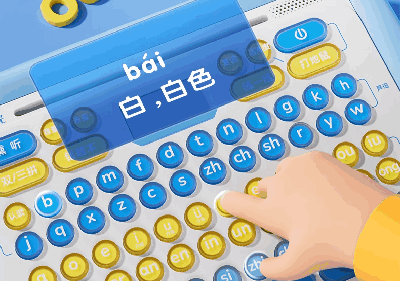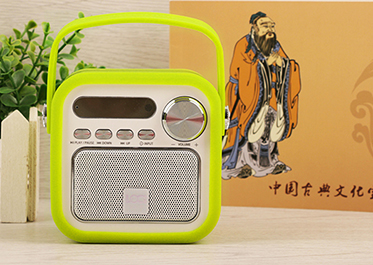What should the evaluation system for children's toys be? This article gives you the answer!
Shenzhen Zuchuang Microelectronics Co., Ltd. is a professional solutions company with experience in electronic product development and research. It specializes in children's educational electronics (thinking machines, dictionary pens, pinyin machines, Chinese learning machines, hearing aids, pocket learning machines, etc.), small home appliances It has rich experience and strong product research and development capabilities in the fields of smart toys such as control and smart home.
As a solution provider with more than 20 years of experience, and also the vice president of the Shenzhen Toy Industry Association, today I would like to talk about the toy evaluation system that the founders understand.
The toy evaluation system is a systematic work, which cannot be separated from the familiarity of the toy manufacturing process, the consideration of market economy and consumption concepts, and the in-depth understanding of children's group culture and psychological and physiological development.
It should be considered from many aspects. These include factors such as safety, playability, functionality, dissemination, uncertainty and attractiveness. The toys here mainly refer to toys used by children, and do not take into account the figures, boxing balls, models, black technology innovative toys, etc. that adults often play with.
#1 Security
Safety is the most basic criterion for evaluating a toy. Both manufacturers and consumers should put safety first. Because if a toy is unsafe, it will cause harm to the child's body and may even cause serious consequences. Safety assessment should consider aspects such as material, design, size, strength and durability.
First of all, the materials of toys should be safe and not contain poisonous or harmful substances. Toy manufacturers should use raw materials that comply with national standards, and the materials should undergo safety testing and certification to ensure that toys will not cause harm to children.
Secondly, the design of toys should conform to children's physical and psychological characteristics. For example, for toys for young children, attention should be paid to the size and shape of the toys to prevent children from accidentally swallowing or eating them. For children's toys, attention should be paid to the strength and durability of the toys to prevent the toys from being easily damaged and causing injuries to children.
Finally, toys should comply with national safety standards and undergo relevant certification and testing to ensure compliance with safety requirements. Manufacturers should conduct strict quality control and safety testing on each batch of products to ensure that the safety of toys can be guaranteed.
#2 Playability
Playability is one of the important criteria for measuring the success of a toy. It determines whether a toy can attract children's attention and interest, thereby promoting children's cognition and development. The evaluation of playability should be considered from the perspective of children, including aspects such as game play, interactivity and creativity.
First of all, good toys should have a variety of different play methods to satisfy children of different ages and interests. For example, some simple puzzle games can be suitable for young children, while complex maze games can be suitable for older children.
Secondly, good toys should be interactive and able to interact with children, giving them a sense of participation and achievement. For example, some interactive toys, such as puzzles and building blocks, can help children develop their collaboration and communication skills.
Finally, good toys should be creative and stimulate children's creativity and imagination. For example, some art and craft toys encourage children to use their imaginations to create their own works of art.
#3 Functionality
This is more from the perspective of the needs of Chinese parents. Good toys should help children develop a variety of skills and abilities, including cognitive, sensory, social and motor. Functional assessment should consider the needs of children of different ages and developmental stages.
First of all, for toys for young children, functionality should focus on cognitive and sensory development. For example, a toy for young children can help them develop sensory skills such as language, vision, hearing, and touch, as well as recognize basic concepts such as colors, shapes, and numbers.
Second, for preschoolers, functionality should focus on social and emotional development. For example, some social games and role-playing games can help them develop collaboration and communication skills, as well as understanding aspects such as emotions and emotion management.
Finally, for young children, functionality should focus on motor and skill development. For example, some sports and hand-made toys can help them develop physical coordination, skills and creativity.
#4 Contagiousness
This is from the perspective of a designer or trader. Communication refers to the communication effect of toys on the brand or product image. Good toys should not only have excellent product quality and playability, but also should be able to help the brand or product establish a good image and reputation in the market. The evaluation of communication should be considered from the aspects of advertising, packaging, design and marketing.
First of all, good toys should have attractive packaging and design in order to attract consumers' attention and increase the sales of the product. For example, brightly colored packaging, creative design and excellent printing quality can improve the communication effect of the product.
Secondly, good toys should be consistent with the brand image and market positioning. For example, an environmentally friendly toy can help the brand establish an environmentally friendly image, while an intellectual development-oriented toy can help the brand occupy a place in the intellectual development market.
Finally, a good toy should be able to attract attention and be shared on social media and other channels. For example, some creative and interesting toys can attract users' attention and sharing on social media, thereby increasing the brand's popularity and exposure.
For example, the four-wheel drive, yo-yo and top can be called everyone's "three-piece childhood set". Their popularity is inseparable from the popularity of every anime. There is another very important reason. It is easy for children to carry and teachers Or parents do not object, and at the same time, it is easy to stimulate children's desire for PK, and they want to buy better ones if they lose, so its communication index is high.
#5 Uncertainty
Uncertainty refers to whether the gameplay and results of the toy have a certain degree of randomness and uncertainty. A good toy should be able to bring a certain degree of surprise and challenge, while also maintaining a certain degree of controllability and safety. The evaluation of uncertainty should be considered from the aspects of game rules, difficulty and safety.
First of all, good toys should be difficult and challenging enough to stimulate children's interest and motivation. For example, some educational games can help children exercise their thinking and problem-solving skills.
Secondly, a good toy should have a certain degree of uncertainty and randomness, and can bring a certain degree of surprise and fun. For example, with Lego, children can use the same building blocks to build airplanes, cars, tanks, etc. in their imagination. Plasticine also counts. One product can bring different rewards and results, thereby increasing the fun and excitement of the game.
Finally, good toys need to maintain a certain level of safety and controllability. For example, some toys that require batteries or recharging need to meet safety standards and also need to provide safety warnings and instructions for use.
#6 Attraction
Attraction refers to the attractiveness and temptation of a toy to the target consumer group. Good toys should be able to attract consumers' attention and desire to buy, and they should also meet market demand and consumer trends.
First of all, this can be understood as the appearance of the toy. Some parents only know their children's age and hobbies, but have no knowledge of toy brands or industries, so they will limit themselves to appearance. For example: "Wow, this robot is so cool. It should be suitable for my son to play with." "Wow, this chick is so cute. It should be suitable for my daughter to play with."
Secondly, good toys need to conform to consumer psychology and brand image, and can arouse the resonance and recognition of consumers. For example, some creative and interesting toys can arouse emotional resonance among consumers, thereby increasing brand loyalty and reputation.
Finally, good toys need to be unique and differentiated from competitors' products, thereby increasing the brand's competitive advantage. For example, some toys with unique designs and functions can attract consumers' attention and desire to purchase.
To sum up, let’s make a simple summary and use a few plain words to explain the evaluation system of children’s toys, that is:
Does it look good, is it safe or not, is it fun, is it useful, what is the tonality, and how long can it be played.
These evaluation indicators can help toy production and service providers understand consumer needs and market trends, thereby improving product competitiveness and market share. At the same time, a good toy evaluation system can also help consumers better choose toys that are suitable for themselves and their children, and improve the effectiveness and satisfaction of their purchases.
Proposal recommendation
- TOP



